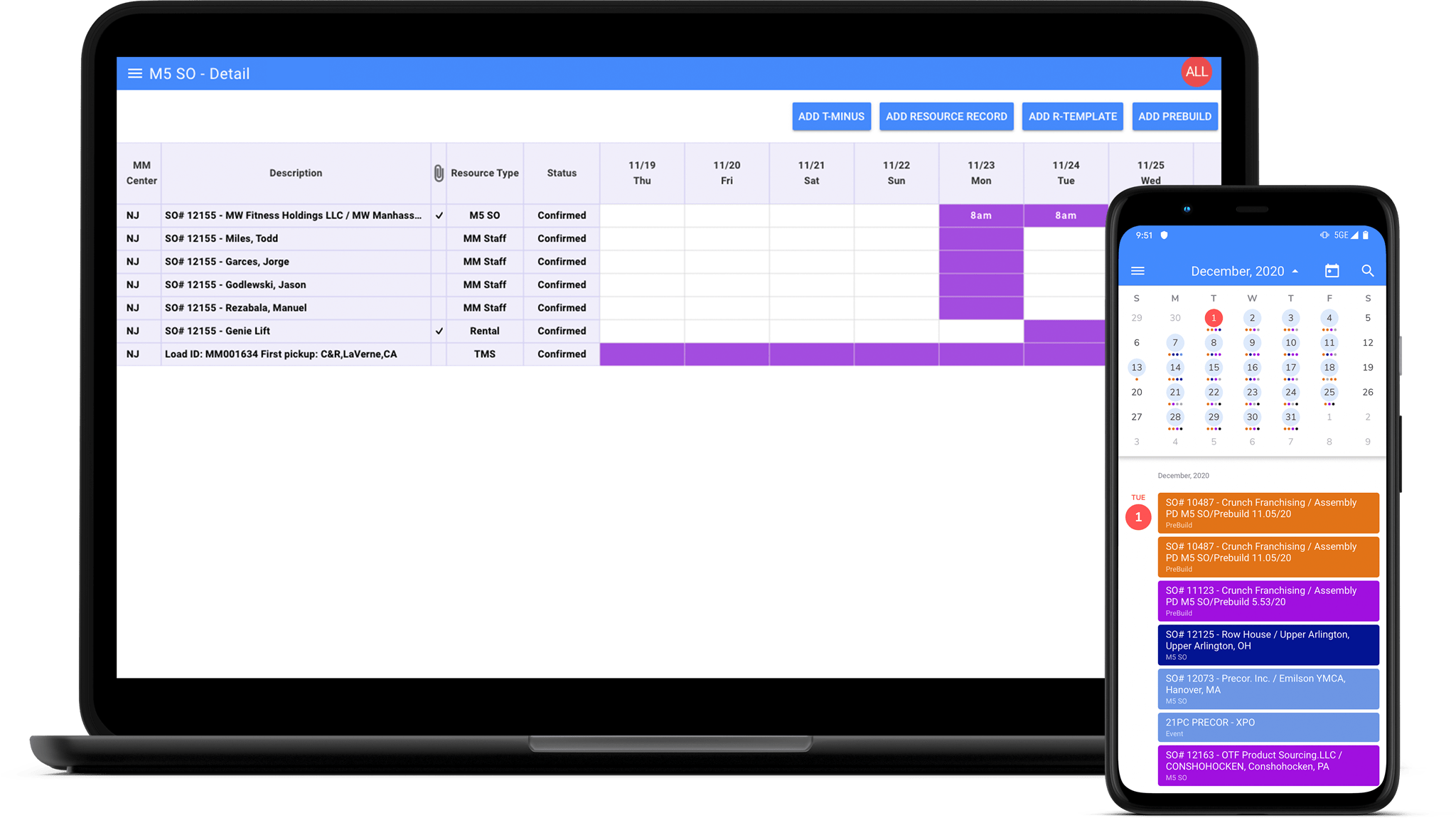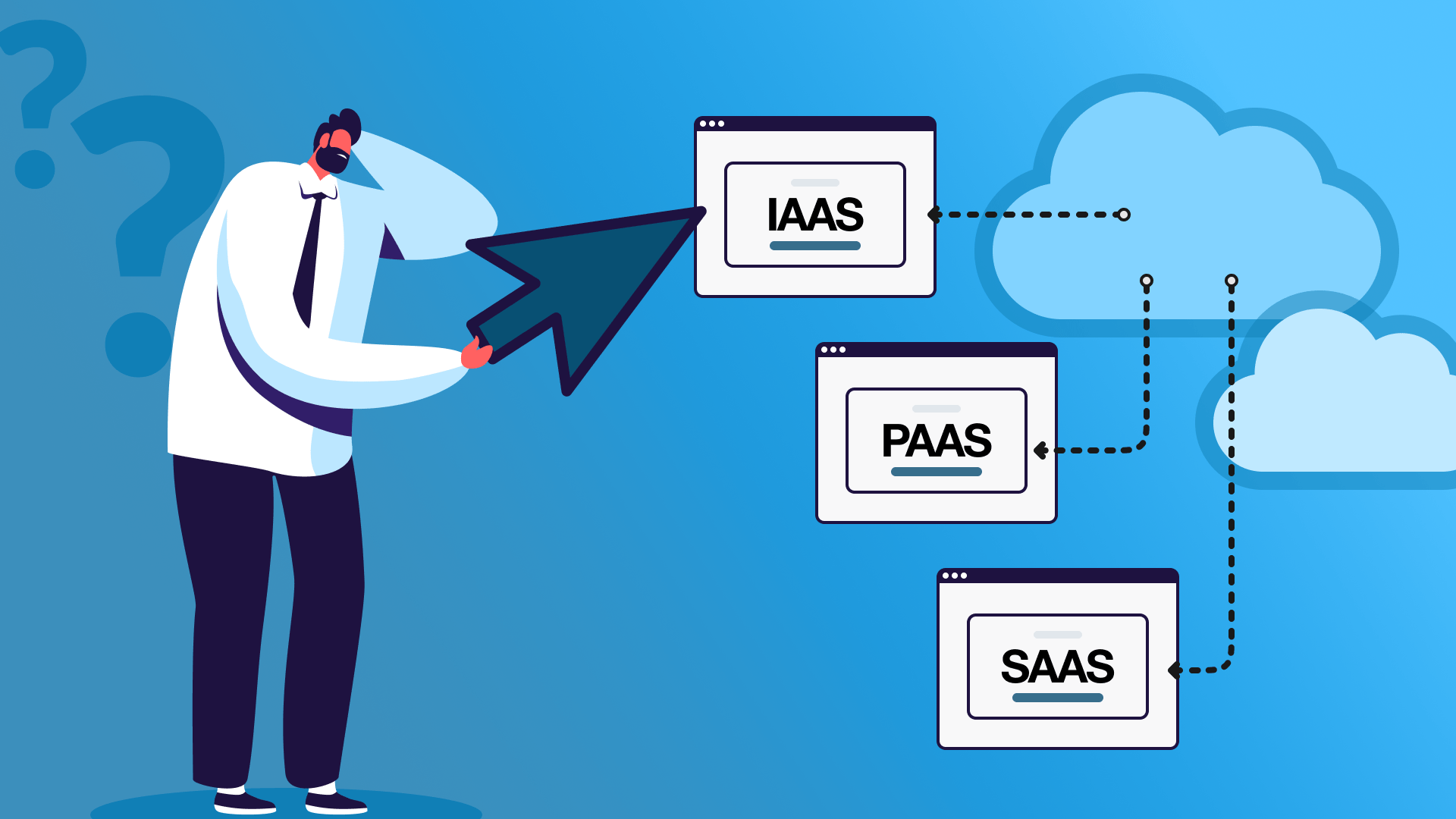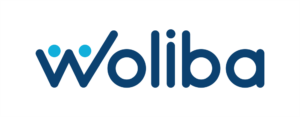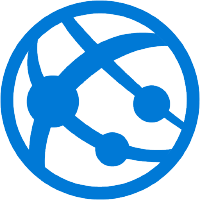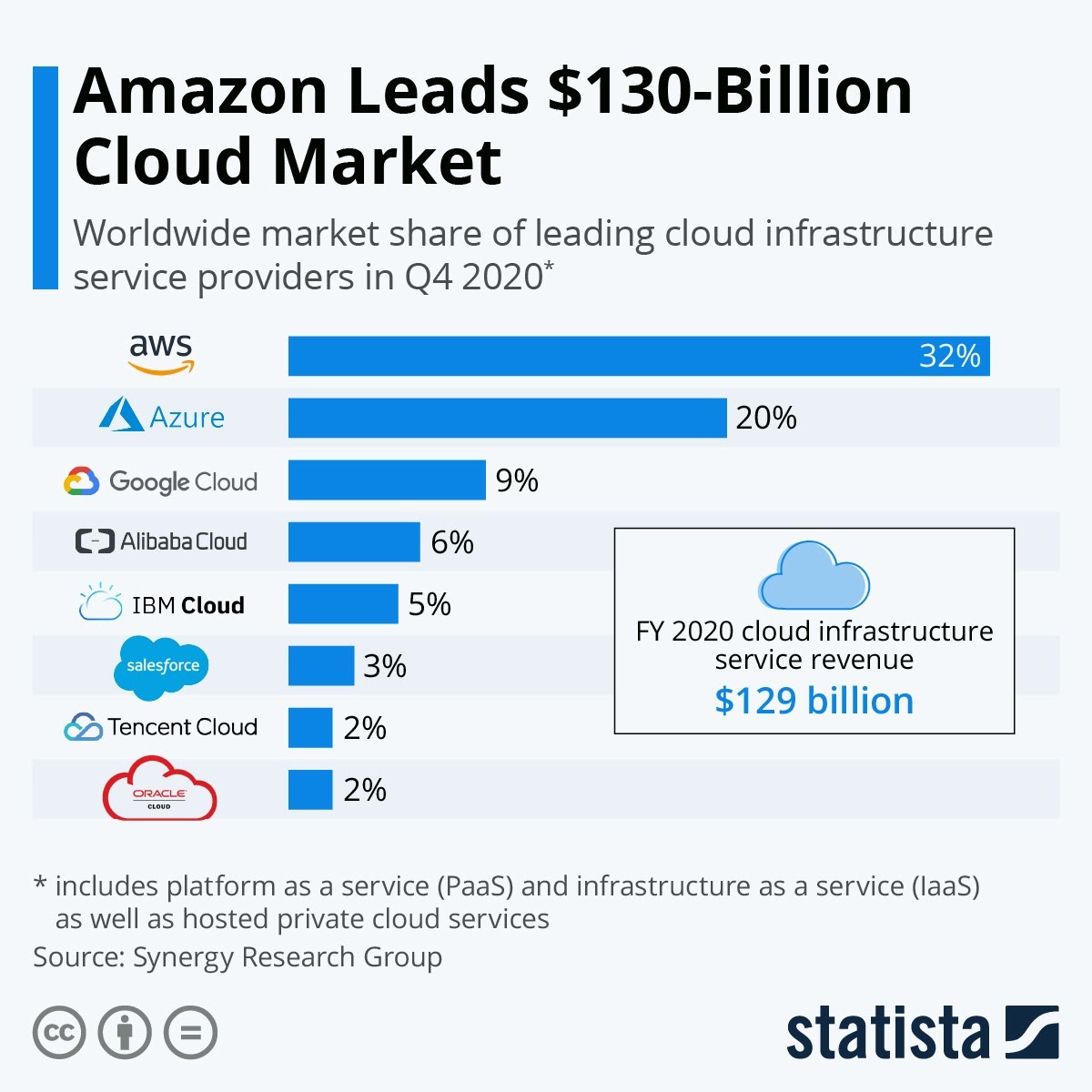The cloud computing market has been steadily growing over the last couple of years, and it is expected to reach a staggering $400 billion in revenue by 2022. The reason behind such widespread adoption of cloud services is simple: businesses are continuously searching for more efficient ways to deliver their services and manage their workforce. The turbulent 2020 taught entrepreneurs worldwide to innovate faster and let go of legacy on-premise infrastructure that is difficult to scale, maintain, and adapt to unexpected change.
Nowadays, more and more companies consider migrating to the cloud to remain competitive and enjoy the benefits of the latest technology achievements. The rapid development of cloud computing has spawned an array of “as-a-service” offerings, yet all cloud solutions can be placed under these key categories:
- Software as a Service (SaaS)
- Platform as a Service (PaaS)
- Infrastructure as a Service (IaaS)
What’s the difference between SaaS, PaaS, and IaaS? What are the pains and gains of switching to any of these? For your convenience, we answered all of these questions below. We hope you find it useful!
What is SaaS?
SaaS is a software delivery model that presupposes access to the software functionality through the Internet and web browsers. Yep, that’s it. You don’t need anything else to start using a SaaS app and continue contributing to your project.
SaaS implies that you receive a ready-made product with a strictly defined number of features depending on the chosen plan. The IT infrastructure design and mechanics are fully managed by the SaaS provider, who is accountable for an interrupted service provision and high security of your data.
SaaS products are the most popular among other cloud-based solutions such as PaaS, IaaS, BPaaS (business process as a service). According to research by Gartner, SaaS will preserve its leading position, with end-user spending reaching $145 million by 2022. Therefore, it’s not surprising that SaaS development services are also in great demand.
Who needs SaaS? The use cases for SaaS adoption are numerous; however, if we were asked to generalize them, here are ideal candidates to leverage SaaS:
- Startups and SMEs that have a limited budget for the product launch
- Businesses with distributed, fully remote teams
- Companies that offer both web and mobile products
- Companies who need proof of concept (PoC) before introducing a new technology
- Large enterprises seeking to reduce their spending on software development and maintenance
Let’s dive deeper into the reasons behind such a rapid SaaS market growth by first looking at the numerous advantageous SaaS offers.
SaaS Benefits
Lower Up-Front Cost
No matter how robust and innovative a software solution is, its high cost is often the decisive factor in turning smaller businesses away. With SaaS, things are different. First off, there is hardly any SaaS product that doesn’t have a free 14-day or even monthly trial, leave alone freemiums that are also very common.
Secondly, SaaS is mostly subscription-based, which means one can choose the cheapest plan paying only for the essentials they will actually use. With on-premise solutions, you’ll need to purchase an expensive license, pay for hardware, and hire people who will install, configure, and maintain this software. And this huge amount of money is invested at once.
Zero Infrastructure
On a very general level, SaaS can be described as renting a house. You enjoy the comfort without worrying about all the building blocks making it possible. SaaS providers are responsible for maintaining the entire IT infrastructure behind their sophisticated apps. Servers, networking, database management, virtualization, middleware – all these are managed by a SaaS vendor.
Worry-Free Upgrade
Since SaaS providers own the entire IT infrastructure, they take care of the software updates as well, freeing up companies from administrative routine and allowing them to finally focus on business-critical tasks. SaaS technology enables automatic deployment of updates, and the latter are released for all users simultaneously, which saves tons of time and allows everyone to work in sync.
Real-Time Analytics
While SaaS functionality is often tailored to a specific vertical, it’s hard to imagine a modern app without real-time analytics or other intelligence tools. Many SaaS providers offer various data reporting features – from heatmaps and advanced filters to AI-driven chart type suggestions. For instance, workplace productivity platforms like Hive rely on built-in analytics to identify the most productive days of the week, overdue tasks and track project progress.
App Integration
Even with all-in-one SaaS products gaining popularity, it is still impossible to fit all the tools one may need for efficient work into one app. Therefore, SaaS providers enable integrations with some of the most popular and essential apps. For example, Zapier integrates with more than 3000 apps, including big names like Gmail, Slack, Mailchimp, Squarespace, OneDrive, and many more.
White Labeling
To enhance their brand awareness, many companies seek solutions that allow at least partial rebranding of the existing product. Therefore, some SaaS platforms are built in such a way that they can be customized to the unique needs of end-users. For instance, Cakemail, an email marketing platform, allows removing Cakemail logo, whereas Learning Pool, a workplace e-learning SaaS, allows building and designing courses the way one deems fit.
Managed Security
Well-established SaaS vendors heavily invest in the security of their software. Microsoft claims to spend over one billion dollars annually on cybersecurity measures. And it’s not surprising: the integrity of their customer data is key to remaining a competitive player in this niche. To achieve this, SaaS providers run multiple data centers, have automatic backups, and rely on data encryption, among other security controls. Once again, SaaS companies take over all the security trouble allowing businesses to free up some IT resources and allocate them for feature requests and growth strategy tasks.
Fast Onboarding
So far, people are used to working with browsers and web apps; therefore, getting employees onboarded with SaaS takes minimum time and effort. For example, Microsoft Office 365 offers a familiar GUI for Word, PowerPoint, and Excel – the starter pack almost every employee has worked with. The same goes with project management platforms that have inherited many features, such as ticket board, project status, time tracking, tagging, from conventional issue trackers like Jira and built on them to provide even better experiences for teams.
SaaS Challenges
Limited Control
While SaaS handles the bulk of the IT burden, it deprives businesses of the ability to take things into their own hands. Therefore, a hasty choice of a SaaS vendor may result in unprecedented consequences for the company, such as poor performance and security breaches. It is SaaS providers who decide when to roll out a new version of the app, where and how your data is stored and secured.
Latency Issues
Before embracing cloud computing, it’s vital to find out where SaaS data centers are located and get a professional consultation on what factors may contribute to cloud service latency. One surefire way to reduce latency is to decrease the distance between the physical location of data centers and end-users. We’ve already brought this up when comparing three major cloud service providers – AWS, Google, and Azure. Here you can view what regions across the world are covered by these cloud computing giants.
Service Disruption
Relying on SaaS also implies that SaaS users have no means to remedy a service disruption should one occur. We all know that no one is immune to technical issues and outages: in 2020, Google alone was down three times while numerous AWS services were unavailable for a couple of hours in November. Needless to say, SaaS products require a strong internet connection, which means people and consumers living in areas with poor connectivity won’t be able to benefit from this technology.
Security Risks
The debate on what is more secure – on-premise or cloud software – still rages on. The answer is simple though: it all comes down to how well a company can manage its infrastructure locally. With on-premise software, businesses fully control their data and thus can immediately respond to any instances of malicious activity. At the same time, if their IT crew overlooked a vulnerability or lacks resources to execute a full-blown cyber defense program, the cloud is obviously a better option. The cloud security risks are associated with loss of sensitive data, DDoS attacks, weak employee passwords, and compliance issues.
Vendor Lock-In
Since SaaS providers have full control over every aspect of the app – from frontend and backend to databases and virtual machines – they are in a much more favorable position than SaaS users. Therefore, before sealing the deal with a SaaS vendor, it’s crucial to carefully study the service level agreement (SLA) for well-hidden or ambiguous clauses not to be chained to a single provider whose service may get worse over time. Other significant aspects to check concern data ownership and how easily it can be accessed and migrated, changeover costs in case you want to switch the provider, as well as uptime guarantees and accountability for poor service.
Examples of SaaS
While being a leader in cloud computing, SaaS adoption across industries is uneven. Certain highly-regulated industries such as Healthcare and Education are reluctant to transition to SaaS because not all providers offer built-in compliance tools tailored to their industry specifics. According to 2020 research by G2 and Global X, verticals showing the highest adoption rate are:
- Banking, Securities, and Insurance (40%)
- Communications, Media, and Service (18%)
- Government (16%)
- Manufacturing, Pharmaceutical, and Life Science (12%)
We should also keep in mind that some SaaS vendors target exclusively horizontal markets, thus covering a broader audience of consumers. For example, human resource information systems (HRIS), marketing platforms, CRM, ERP systems, project management platforms, file sharing & collaboration tools – all these can be used by businesses from different industries.
Vertical
Banking & Fintech
Insurance
E-Commerce
E-Government
E-Learning
E-Healthcare
Corporate Wellness
Manufacturing
Accounting
Horizontal
File Storage & Sharing
Communication & Collaboration
Workflow Automation
Project Management
CRM
ERP
Marketing
HRIS
Document editing and e-signing
What is PaaS?
PaaS is a cloud computing model that provides software developers with a fully provisioned development and deployment environment in the cloud. PaaS users can build, test, deploy, maintain, and upgrade their software without purchasing numerous licenses to set up a professional development workspace.
With PaaS, developers don’t have to worry about the underlying IT infrastructure such as servers, storage, networking – these are the responsibility of a PaaS provider. Additionally, PaaS vendors provide clients with a suite of sophisticated development tools, middleware, operating systems, database management systems, business intelligence tools, among other services.
Just like its cloud computing neighbors, the PaaS market is on the rise. It is estimated to reach $71 billion in global revenue by 2022.
Who needs PaaS? The most common use case for adopting PaaS is the need to build applications faster and cheaper. If we narrow our focus down, PaaS is an excellent fit for:
- Software developers who cannot afford to set up a fully-fledged development and deployment platform and thus need a readily available solution
- Companies specializing in API development and management
- Companies specializing in IoT: PaaS usually supports multiple environments, programming languages, and IoT deployment tools
- Businesses with distributed IT teams
While PaaS shares the same advantages as other cloud computing offerings, such as accessibility, scalability, collaboration, and speed to market, it also boasts several unique qualities that lure more and more entrepreneurs into it. Let’s check them out.
PaaS Benefits
Reduced Coding Effort
PaaS is often associated with faster time to market. But why? What makes it so efficient? With pre-built backend infrastructure, developers can focus solely on feature requests, usability, and performance. Another reason is that developers can use pre-coded app components, such as search, directory services, chatbots, workflows, security, scheduling, and many other features.
Multiplatform Development
Many PaaS providers support multiple platforms – desktop, web, mobile, to cater to their clients’ miscellaneous needs. Having all the modern resources at their disposal, software developers can build cross-platform apps easier and faster.
Seamless App Lifecycle Management
PaaS is also appealing because it allows managing the app development from start to finish within the same integrated environment. Building, testing, deploying, and scaling – all these can be performed with the help of the most modern and sophisticated tools, including analytics and business intelligence modules.
PaaS Challenges
Security Risks
While PaaS providers manage the security of the platform infrastructure, the security of the apps built on PaaS is the sole responsibility of developers. Moreover, not all PaaS vendors comply with industry security standards. Therefore, it’s critical to clarify if the data at rest is encrypted, if multifactor authentication is in place, if there is an incident response plan, and what their disaster recovery plan looks like.
Legacy Apps
PaaS is primarily designed for building and launching new products rather than migrating legacy apps. Consequently, enterprises willing to move their legacy apps to the cloud may face several challenges. Before signing a contract with a PaaS vendor, these businesses first need to ensure that the available server types, data storage systems, and networking components can be matched with their app. Such software and hardware incompatibilities may significantly affect the final numbers on the price tag.
Changeover Cost
We’ve already talked about vendor lock-in with SaaS, and things are similar with PaaS. You don’t want to be stuck with one provider forever and dance to their tune even after their service has deteriorated. While changing a PaaS provider is possible, in reality, it may cost you a fortune. Just think about it – you’ll need to migrate all the code and data, rebuild your network management operations, waste IT resources on this administrative routine, and retrain all your staff again.
Examples of PaaS
This list of PaaS vendors we’ve compiled is by no means exhaustive. You’ll find both open source and proprietary options with a varying number of services. Let’s have a look at some of the most popular PaaS providers and compare them side by side.
| PaaS | 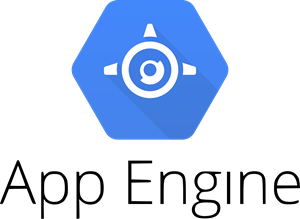 |
|---|---|
| Major Stack |
|
| Regions |
|
| Pricing |
|
What is IaaS?
IaaS is a cloud computing model that enables on-demand consumption of compute, network, and data storage resources over the Internet. It is usually delivered on a pay-as-you-go basis, which means clients pay only for the resources they use for as long as they need them.
IaaS is considered the fastest and the cheapest way to migrate to the cloud. You don’t need to redesign your app’s entire architecture to be able to start using IaaS. With IaaS, it is also easy to scale development and test environments.
According to Statista, the IaaS market revenue will hit $107 billion by 2022, and we believe this trend is not vanishing into thin air anytime soon.
Who needs IaaS? Generally speaking, IaaS is ideal for businesses that want cloud scalability and agility while retaining some control over its software. Here is who can benefit from IaaS the most:
- Companies who want to quickly set up an infrastructure for a temporary or experimental workload
- Businesses who want to reduce IT infrastructure costs
- Businesses who experience unpredictable spikes in traffic
- Companies relying on the power of supercomputers (financial modeling, earthquake simulations, drug-cell interactions, AI-driven UI multivariate tests, etc.)
Like SaaS and PaaS, IaaS is cost-effective, easily accessible, and speedy, but it also has some other pros and cons. Let’s find out!
IaaS Benefits
Zero Idle Resources
If we think of on-premise data centers and physical IT infrastructure, they are originally built in such a way to be able to meet the highest service demand. What happens, in reality, is that those traffic peaks are temporary. At the same time, businesses are forced to spend money on maintaining the resource-heavy infrastructure even though its potential is not used to the maximum extent. With IaaS, this issue is no longer relevant as IaaS users can receive the needed resources on-demand, scaling up and down in a matter of minutes.
Sophisticated Equipment & Services
All reputable IaaS providers are industry giants having billions of dollars at their disposal to invest in innovation and the latest equipment. It’s not feasible for a small business to compete with such companies, yet they can still access the most potent processors, latest networking hardware, and cutting-edge container orchestration, all thanks to IaaS. There is no need to give your last penny for pricey equipment and licenses to move at the same pace as the leading tech companies. IaaS allows leasing a modern, highly scalable, and cost-efficient infrastructure.
Global Market
IaaS providers are continuously working on expanding the geographies they cover. Regions like the USA have multiple availability zones to prevent a single point of failure, ensure data replication, and 99,99% uptime. Understanding what IaaS provider supports what region allows mitigating latency and performance issues and entering a global market with confidence and ease.
IaaS Challenges
Granular Billing
The major drawback of the pay-as-you-go billing is that it is super granular, and one needs to be well-versed in all possible cloud pricing plans to choose the most favorable option. Multiple tiers, regions, packages, reserved instances, and hourly or even per-second rates for each service and their scaled versions – it is easy to get lost in all of that and overlook some crucial aspects. Moreover, one needs to have a basic understanding of how much resources they will consume and factor in unpredictable expenses. All in all, granular fees may quickly add up to a multi-figure number.
Security Risks
Security is the number one concern for all cloud models, and IaaS is no exception. Once again, your entire backend is dependent on the reliability of an IaaS provider. To protect their data integrity, businesses need to know what security controls are already implemented by the IaaS vendor to be aware of potential weaknesses. Needless to say, they are solely responsible for the apps they build and host on IaaS.
Compliance Issues
While IaaS is suitable for companies operating on a global market in terms of ever-growing region coverage, its usage may pose a challenge in terms of data sovereignty. With international organizations tightening the screw on data protection laws, businesses now should be more careful in their rush to move to the cloud. Knowing how user data is collected, where it is located, and what user privacy policies are in place are the bare essentials to keep in mind when selecting an IaaS provider.
Examples of IaaS
Among IaaS providers, you’ll find the same cloud computing giants offering PaaS because the latter already includes IaaS plus extra services explicitly tailored to software engineers’ needs.
As seen from the infographic, we have a 21% market share left, which is further distributed among other IaaS vendors, such as:
- Rackspace
- OpenStack
- Linode
- OpenNebula
- Apache CloudStack
- Vultr
- Kamatera
- and dozens of smaller providers.
SaaS vs PaaS vs IaaS
We’ve mentioned examples of SaaS, PaaS, & IaaS, yet the fundamental difference between these cloud computing models comes down to two essential attributes:
- the target audience
- the level of control and freedom one wants to have over their IT infrastructure
| SaaS | PaaS | IaaS |
|---|---|---|
| End users: consumers, employees | Software architects, developers, testers, delivery teams | System administrators, DevOps |
| Applications | Applications | Applications |
| Data | Data | Data |
| Runtime | Runtime | Runtime |
| Middleware | Middleware | Middleware |
| OS | OS | OS |
| Virtualization | Virtualization | Virtualization |
| Servers | Servers | Servers |
| Storage | Storage | Storage |
| Networking | Networking | Networking |
| What you manage | ||
| What provider manages | ||
The SaaS vs PaaS vs IaaS difference is often explained through the pizza-making metaphor. SaaS is when you go to a restaurant and receive a professionally baked pizza delivered right to your table. PaaS is when you have all the ingredients and professional equipment, yet you make and deliver your pizza yourself. IaaS is when you’re only given the essentials, your pizza ingredients, but you need to figure out what tools to use, how to cook it, and how to deliver it.
Summing Up
Over the recent years, cloud computing has gained immense popularity and is projected to steadily grow in the coming years. Due to the widespread adoption and tangible benefits it offers in terms of flexibility, cost-effectiveness, and opportunities to innovate, more and more cloud infrastructure providers continue to diversify their offerings. Therefore, it’s not uncommon to come across numerous “as-a-service” terms, be it XaaS (anything as a service), BMaaS (bare metal as a service), or FaaS (function as a service). Along with the undeniable benefits, cloud computing poses several risks; therefore, choosing the right cloud provider with the help of a professional cloud consultant plays a decisive role in the success of a company’s cloud strategy.
See how our workflow tools helped Mass Movement join assets with J.B Hunt, increasing its quarterly revenue up to $2.74 billion
